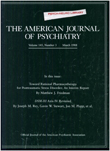Overview: toward a dysregulation hypothesis of depression
Abstract
The authors suggest that the activity of neurotransmitter systems in the affective disorders and related psychiatric syndromes may be better understood as a reflection of a relative failure in their regulation, rather than as simple increases or decreases in their activity. A model organized around the concept of "dysregulation" posits that persistent impairment in one or more neurotransmitter homeostatic regulatory mechanisms confers a trait vulnerability to unstable or erratic neurotransmitter output. Evidence from clinical and animal model studies for dysregulation of the noradrenergic system in depression is examined with respect to criteria generated by such a general model, and a specific configuration of noradrenergic dysregulation in some forms of depression is proposed.
Access content
To read the fulltext, please use one of the options below to sign in or purchase access.- Personal login
- Institutional Login
- Sign in via OpenAthens
- Register for access
-
Please login/register if you wish to pair your device and check access availability.
Not a subscriber?
PsychiatryOnline subscription options offer access to the DSM-5 library, books, journals, CME, and patient resources. This all-in-one virtual library provides psychiatrists and mental health professionals with key resources for diagnosis, treatment, research, and professional development.
Need more help? PsychiatryOnline Customer Service may be reached by emailing [email protected] or by calling 800-368-5777 (in the U.S.) or 703-907-7322 (outside the U.S.).



